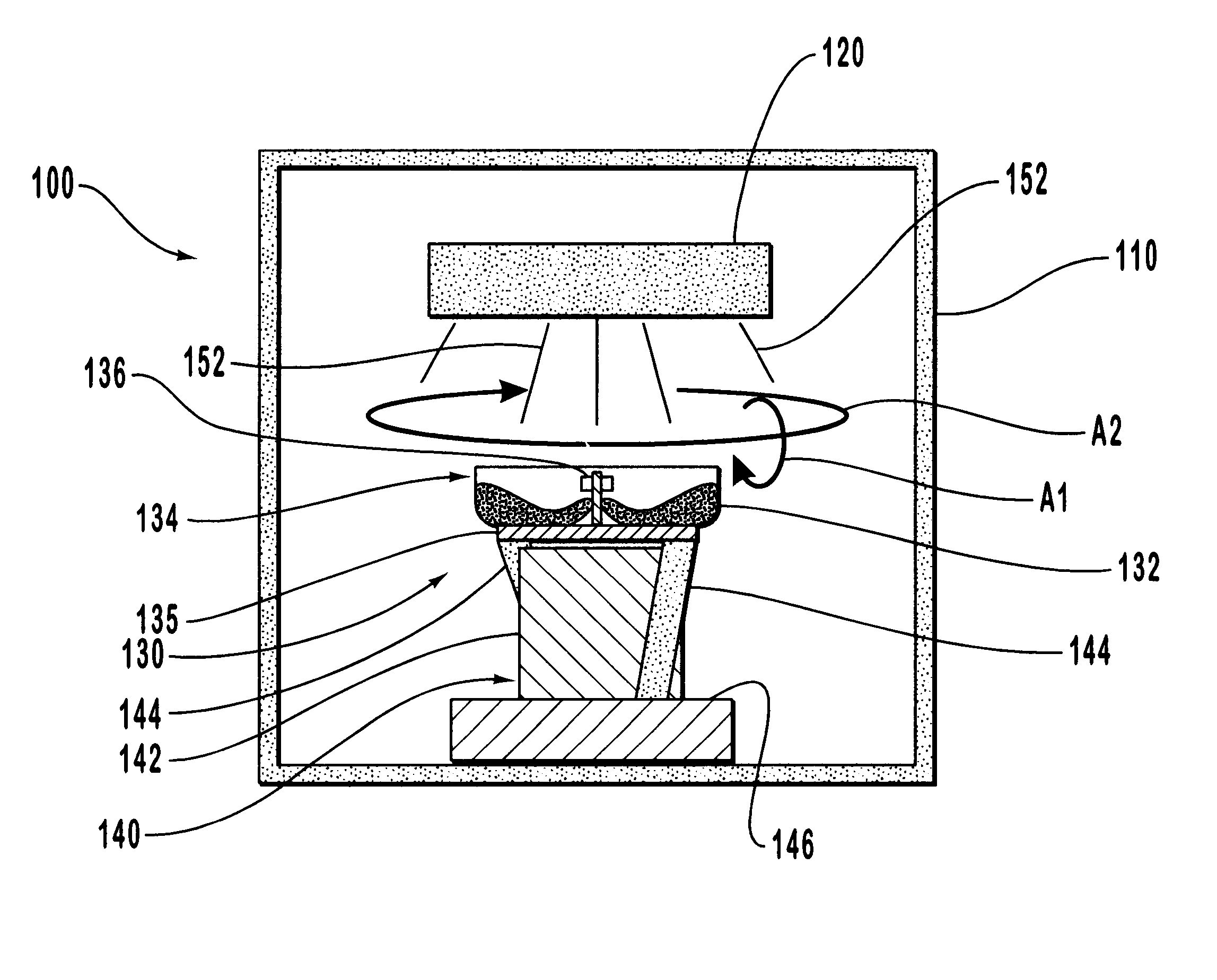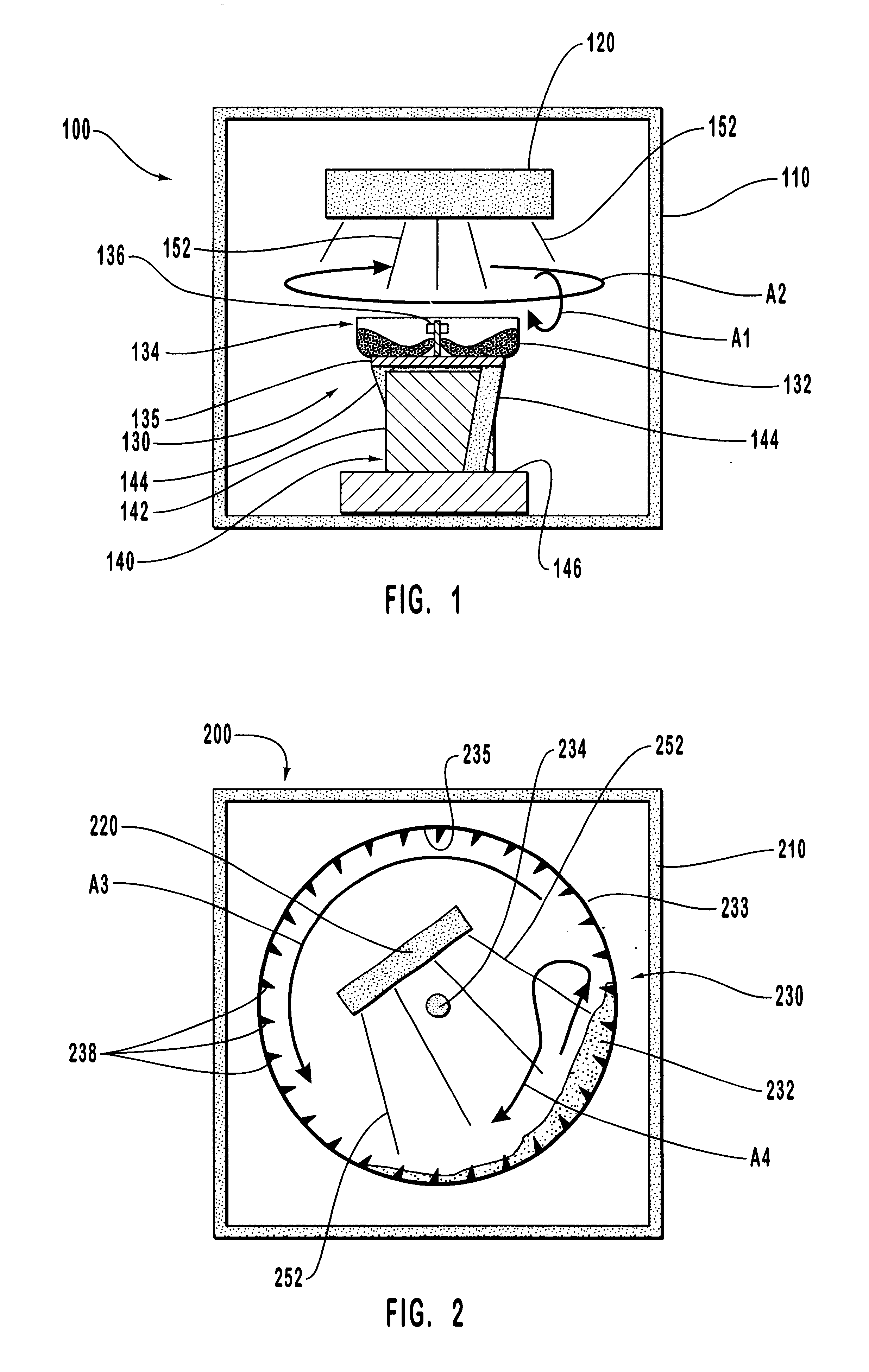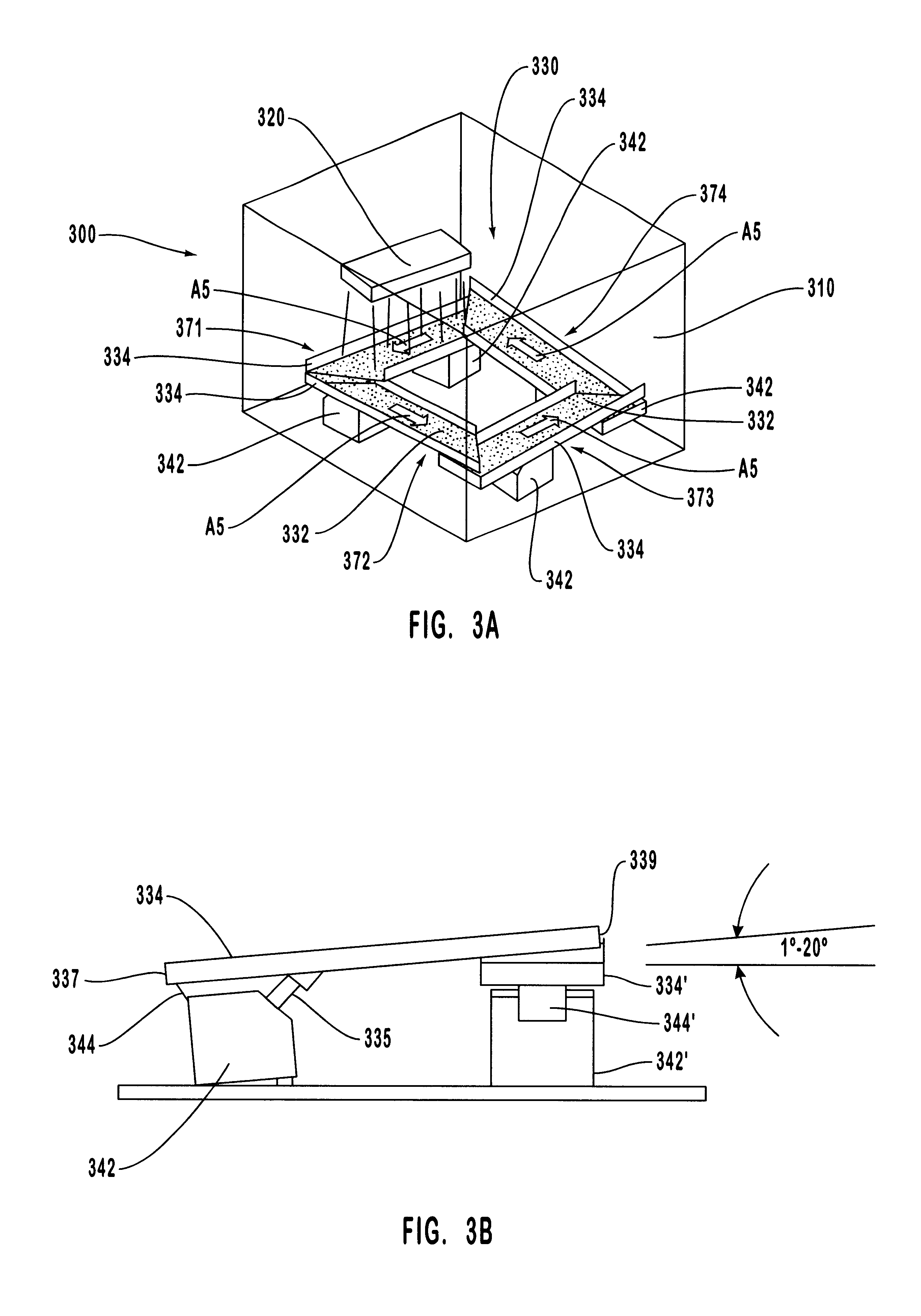Methods and apparatus for producing enhanced interference pigments
a technology of interference pigments and pigments, applied in the field of methods, systems and apparatus for the production of thin interference coatings, can solve the problems of large islands or dots of material being deposited on the base material, pyrolysis methods, and electroless deposition methods and pyrolysis methods, and achieve continuous coatings at the expens
- Summary
- Abstract
- Description
- Claims
- Application Information
AI Technical Summary
Benefits of technology
Problems solved by technology
Method used
Image
Examples
example 1
Gold Pearl interference pigment was first washed in acetone and dried in an air oven. The dried pigment was then placed in a cooled dish placed in a vacuum chamber pumped to a pressure of about 1.multidot.10.sup.-4 Torr and subjected to DC magnetron coating of chromium in an Ar pressure of about 2.5.multidot.10.sup.-3 Torr.
example 2
Super Green Pearl pigment was similarly washed and dried as described in Example 1. It too was exposed to sputter deposition of chromium while being subjected to vibrational movement.
example 3
Violet Pearl pigment was treated as described in Example 1. It was also sputter coated with chromium.
PUM
| Property | Measurement | Unit |
|---|---|---|
| temperature | aaaaa | aaaaa |
| thickness | aaaaa | aaaaa |
| thickness | aaaaa | aaaaa |
Abstract
Description
Claims
Application Information
 Login to View More
Login to View More - R&D
- Intellectual Property
- Life Sciences
- Materials
- Tech Scout
- Unparalleled Data Quality
- Higher Quality Content
- 60% Fewer Hallucinations
Browse by: Latest US Patents, China's latest patents, Technical Efficacy Thesaurus, Application Domain, Technology Topic, Popular Technical Reports.
© 2025 PatSnap. All rights reserved.Legal|Privacy policy|Modern Slavery Act Transparency Statement|Sitemap|About US| Contact US: help@patsnap.com



